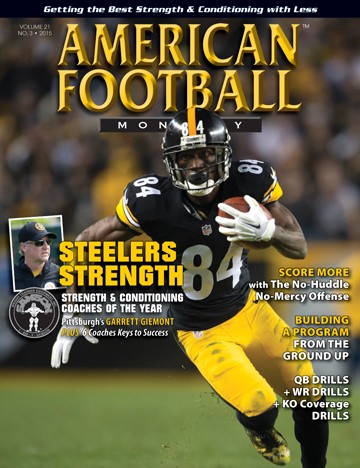Article CategoriesAFM Magazine
|
AFM Subscribers Ask with Mike Goldenby: AFM Editorial Staff© More from this issue Mike Golden is the Director of Sports Performance at the University of Massachusetts. He has 18 years of collegiate strength and conditioning experience. Prior to UMass, Golden coached for two seasons at the University of South Florida. He also coached at East Carolina, helping build the Pirates into one of the top programs in Conference USA, winning back to back conference championships under Head Coach Skip Holtz. While at ECU, he also trained first round draft pick Chris Johnson, who recorded the fastest 40-yard dash time in NFL Combine history. Golden has also coached at the University of South Carolina, Connecticut, and his alma mater, Central Connecticut State. How much time do you spend doing the following – farmer’s walks with sand-loaded buckets, flipping tires, pulling tires – a....The full article can only be seen by subscribers. |
|
|||||||
| HOME |
MAGAZINE |
SUBSCRIBE | ONLINE COLUMNISTS | COACHING VIDEOS |
Copyright 2025, AmericanFootballMonthly.com
All Rights Reserved





